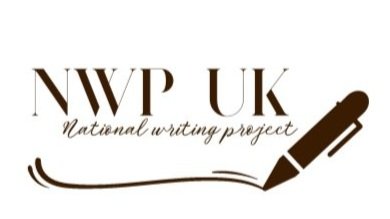Remembering
Remembering Exercises draw upon memory (and dreams)
‘For many writers, their earliest experiences are not simply a resource for their writing, but the very source of it, the place from which it all springs.’
Andrew Cowan, The Art of Writing Fiction
Note on the therapeutic benefits of such expressive exercises :
The mental and physical benefits of disclosing emotional trauma through expressive writing have been outlined in a number of Psychiatric research papers, notably several by James Pennebaker 1985-2002 (interview with Claudia Hammond BBC R4 2013), and a meta- analysis by Smyth 1998. The findings are that revisiting powerful memories a number of times on the privacy of a piece of paper, and forming them into a causal narrative, leads to better control over troubling issues and a better understanding of oneself. (Simon Wrigley 6.5.2014)
Jim Pollard writes about related matters in the Observer 2002:
Texas-based psychotherapist Miriam Kuznets offers similar therapy to groups of clients. ‘I suggest a prompt - for example, imagine a working day one year from now or describe a home that was important to you when growing up - and then I let people write for 15 to 20 minutes. They can then share what they’ve written or not. Writing lets you choose your words, so it works well with people who are less able to verbalise their feelings or who are sceptical about talk therapy. It’s more concrete than just talking, and you can do it on your own, anywhere.’
For full text of Jim’s article, click here.
Writing Histories
Think of five moments in your own writing history which were in some way significant. Take 3 minutes to jot them down quickly in brief note form - enough to retrieve the memory. (These might be: pre-school memories; classroom pride or shame; censorship or acclaim; personal correspondence; family or employment times when writing really ‘mattered’; epiphanies in teaching. They might focus on people, materials, places.) Take time to talk with a writing partner and see what commonalities these writing memories have - can you ‘group’ them in any ways? Now decide on one you would like to revisit in greater detail and write about it for 5 minutes or so. Afterwards it can be useful to talk and share - and reflect on what the implications might be for adapting such a writing approach in the classroom.
Floor-plan exercise
This is a sequence developed from an exercise outlined by Peter Stillman in his book 'Families Writing' (1992).
Think of a room, place or area that you know well enough to draw as a map. Take a few minutes to do this. Mark on your map/diagram those objects, windows, doors, trees, roads or corners which are special to you. Add labels, notes attached to your diagram to help you define or retrieve the memory or association. These could be single words 'table', or more detailed allusions such as 'scrambled egg' which are sufficient to bring back some associated memory. They might be names 'Aunt Gladys' or even spoken words, "Finished, mummy!" Now you might draw lines connecting any of these notes - the connection might be that certain notes belong to a particular time, person, feeling or theme about this special place.
When you are ready, talk to a writing partner about your notes, elaborating on your memories of the place as necessary. Take time to hear their stories generated from their notes on their own diagram of their special place.
Now, taking any starting point or connection you have identified from your diagram, write freely and quickly for about 5 minutes. Do not be afraid if your writing takes an unexpected turn.
After 5 minutes or so, take time to discuss with your writing partner, and share your writing if you wish. One of the things we have asked writers to consider is, "What is the difference between your feeling/experience of drawing, talking and writing about your 'special place''?"
Common responses are as follows:
that the drawing 'grows' as the one detail suggests and provokes another memory.
that the spoken explanations and conversation
help tease out inconsistencies, add detail and clarify half-formed thoughts in the writer's mind;
show the writer which aspects of the rehearsed memory command the interest of a new audience;
suggest aspects which might be developed /explored in writing
that the experience of writing - when the writer is alone with the page - can be deeper and more emotionally charged than the explanations that preceded it, and often the writing unravels in unexpected directions.
STOP. THINK BACK TO:
A time when… A place where…
A person who… An object that…
MEMORY CHAIN
This exercise relies on thinking quickly and letting your mind jump from one place to another. Jot down a memory - sufficient words to ‘catch’ it for you, and then let any aspect of this memory spark another. Jot this second memory down and go through the same ‘sparking’process a further 5 or 6 times. Look back through your memory and see if there are common threads. Take time explaining these to a partner, and hearing theirs. Now choose one of these to write freely about for 5 minutes or so. Then get back together and share thoughts about the process, and read as much - or as little - as you wish. This kind of exercise can often give sufficient impetus to start an important piece of writing which can be revisited later in private and worked up into a longer piece.



